What trees do and do not tell us
Erick Matsen
What we learned so far
- phylogenetic trees depict evolution; other sorts of trees can depict similarity
- internal nodes have a specific meaning, which differs between biological contexts
- trees represent a sampled set of tips, and different sampling schemes can give us different pictures of history and the evolutionary process
- reading phylogenetic trees takes practice, and it’s easy to be misled
- mutation rates can vary across the tree and this makes it challenging to assign calendar dates
What we learned so far (con’t)
- it can be difficult to learn the root of the tree
- to build an informative molecular phylogeny, we need mutations
- phylogenetic reconstruction isn’t “obvious” and methods should use biological understanding of substitution types and per-site effects
- we need to understand homology to be able to understand phylogeny
- phylogenetic inference makes sense on the level of single non-recombining genes… beyond that things get complicated

Branch support and branch lengths
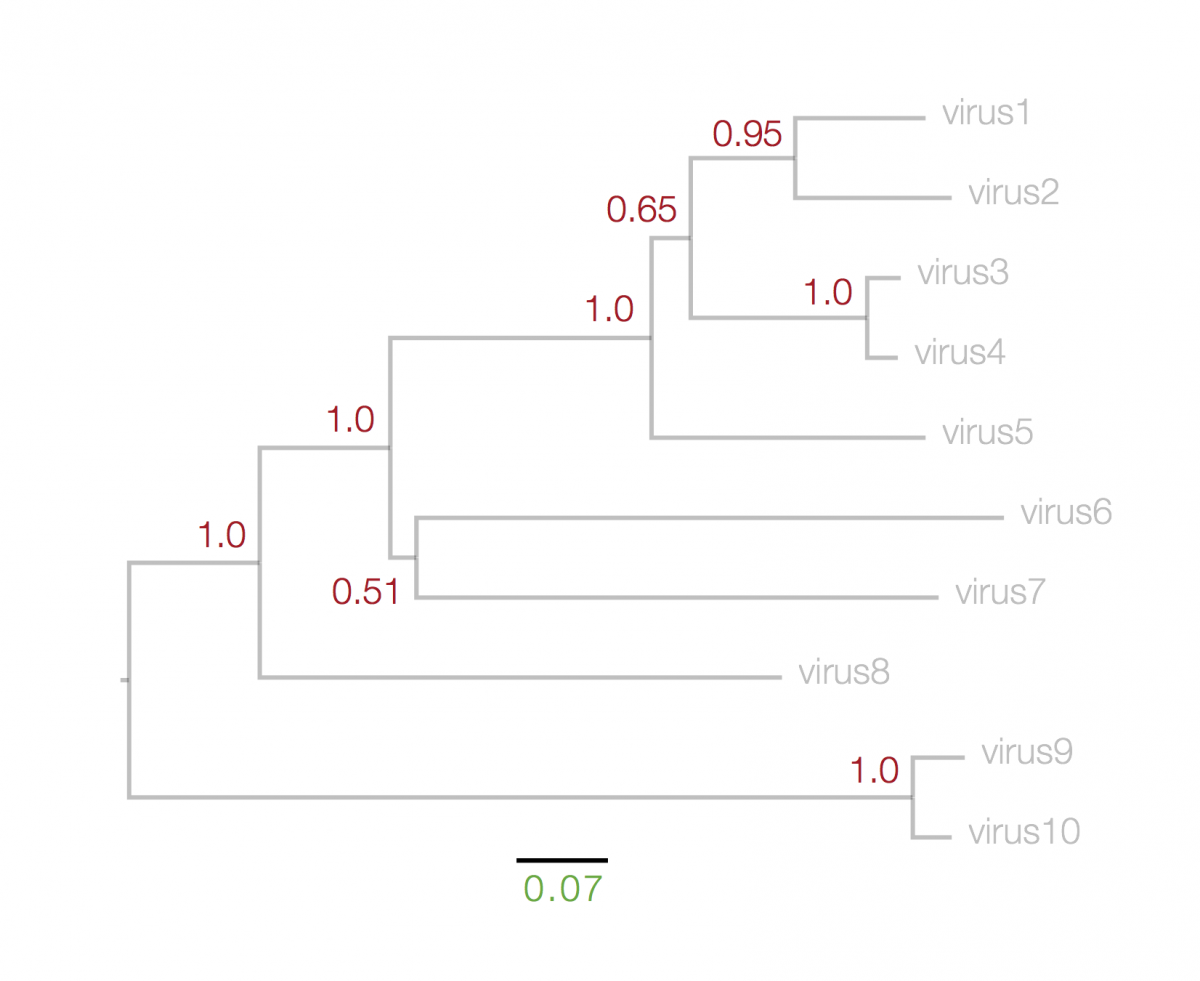
Circular tree representation

Unrooted tree representation

Can rotate branches
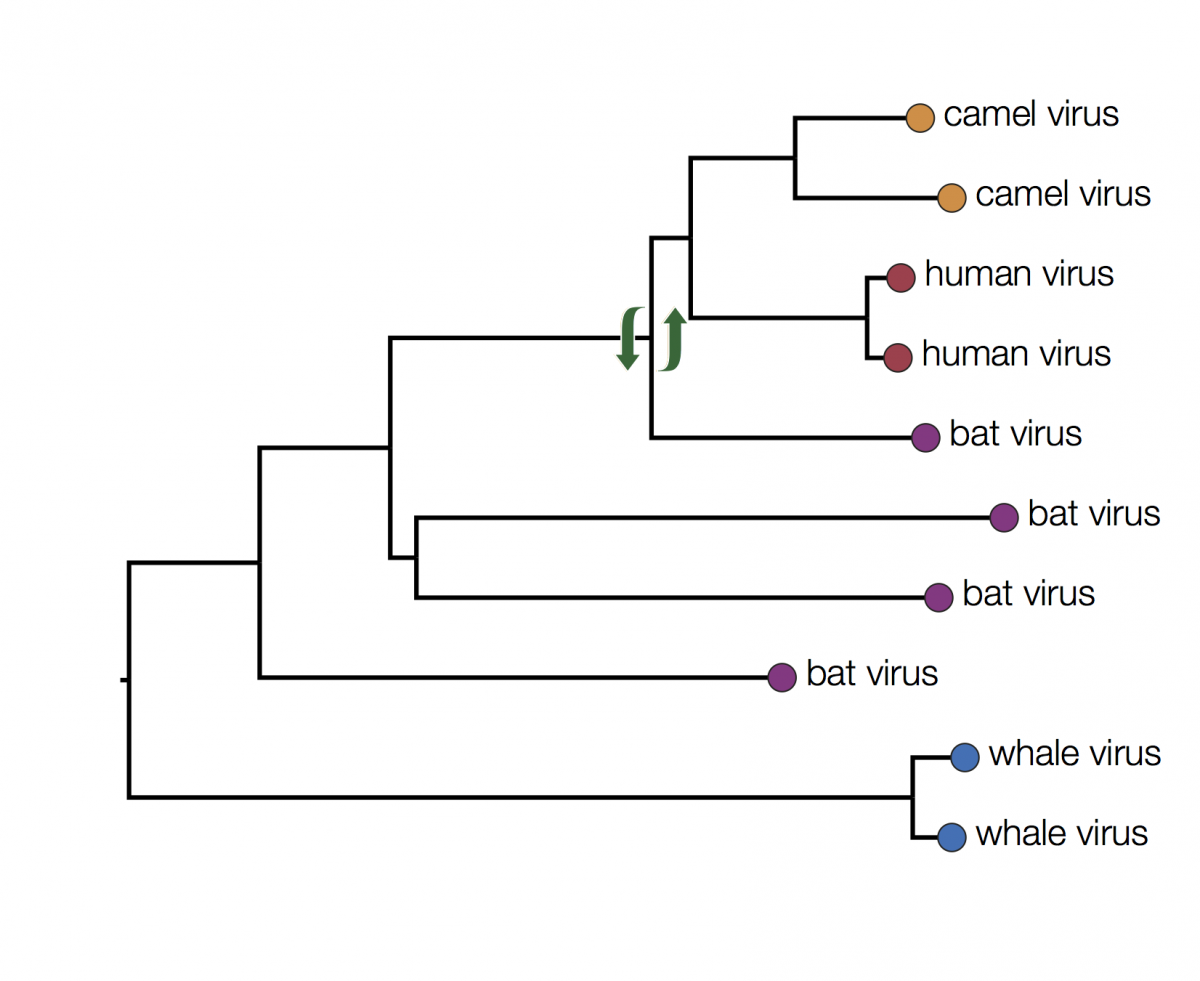

Relationship of the sampled set of sequences

Nextstrain.org
A tree of sampled HIV sequences
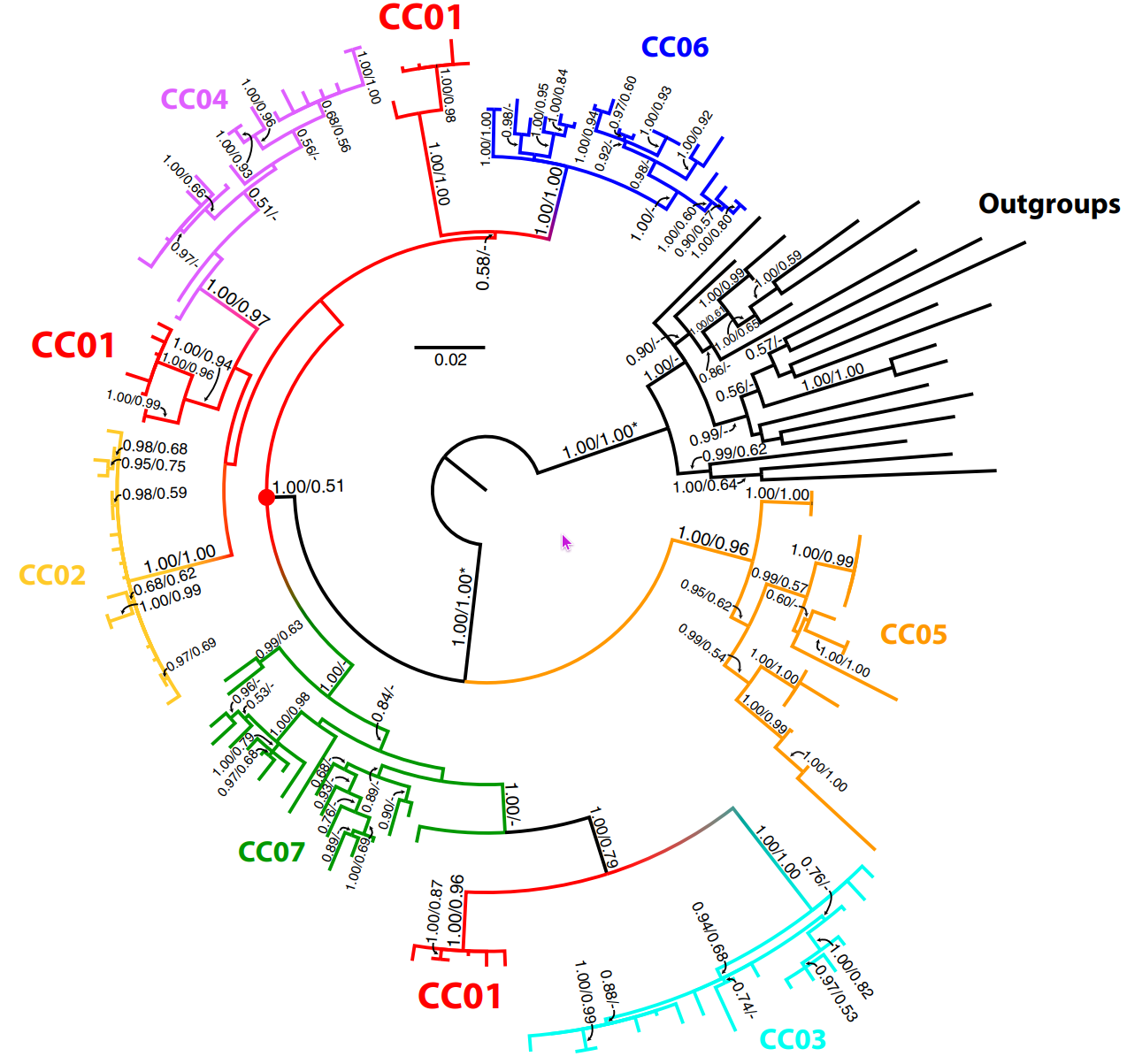
Expected number of substitutions per site (flu)

Trevor Bedford
The “molecular clock” for flu

Trevor Bedford
“Time tree” gives (calendar) dates for all nodes

Trevor Bedford
An inference about the age of SIV
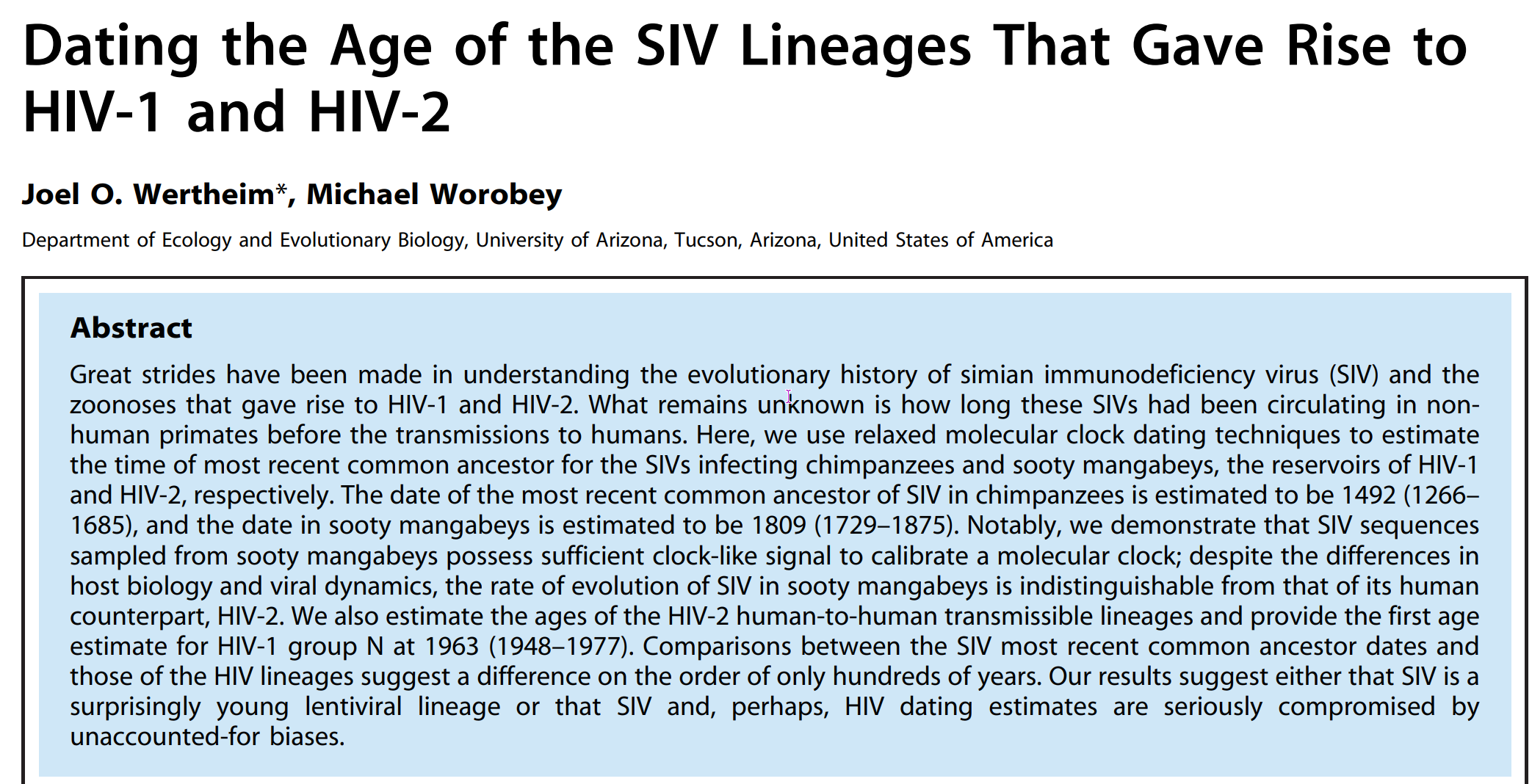
Say you can sample SIV from anywhere, and you know that Bioko was connected to the mainland 10,000 years ago. How could that inform your understanding of the divergence of SIV?
What AMAZING fact can you see in the flu phylogenetic time tree?

WTF is going on here?

Worobey et al, Science 2010
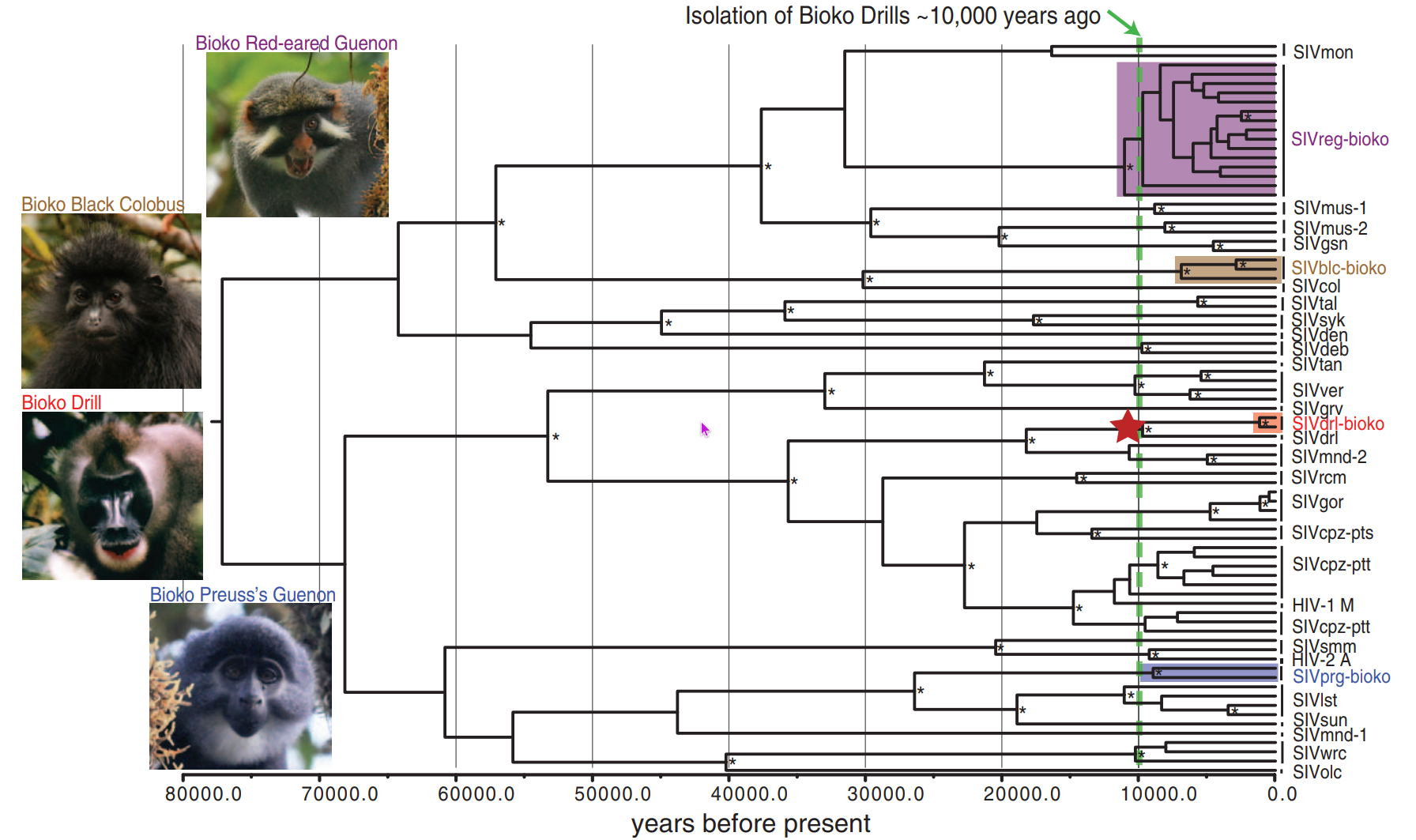
“This pattern suggests that the more rapidly evolving the character, the more biased the dating estimate becomes toward the present.”
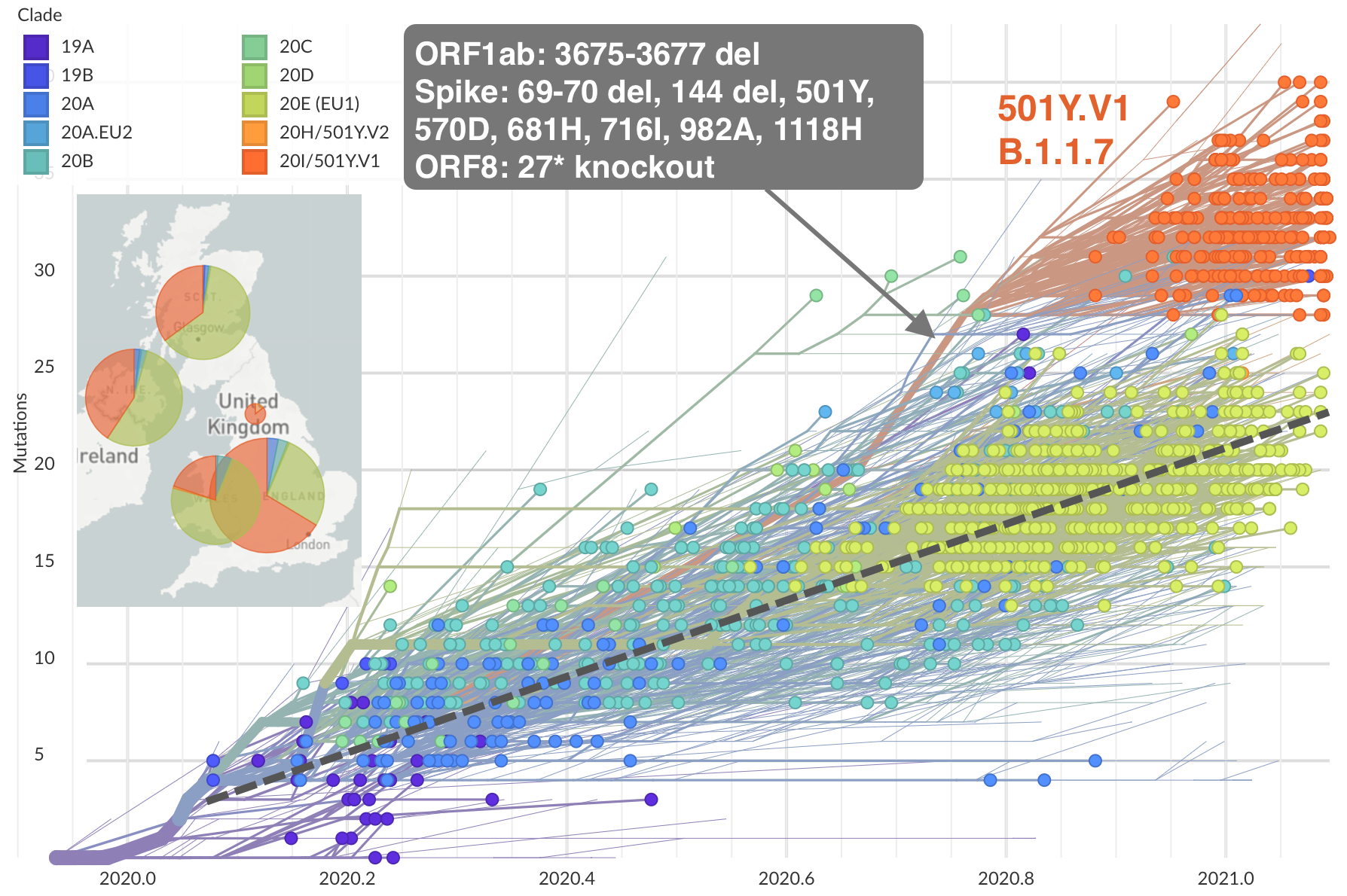
Trevor Bedford
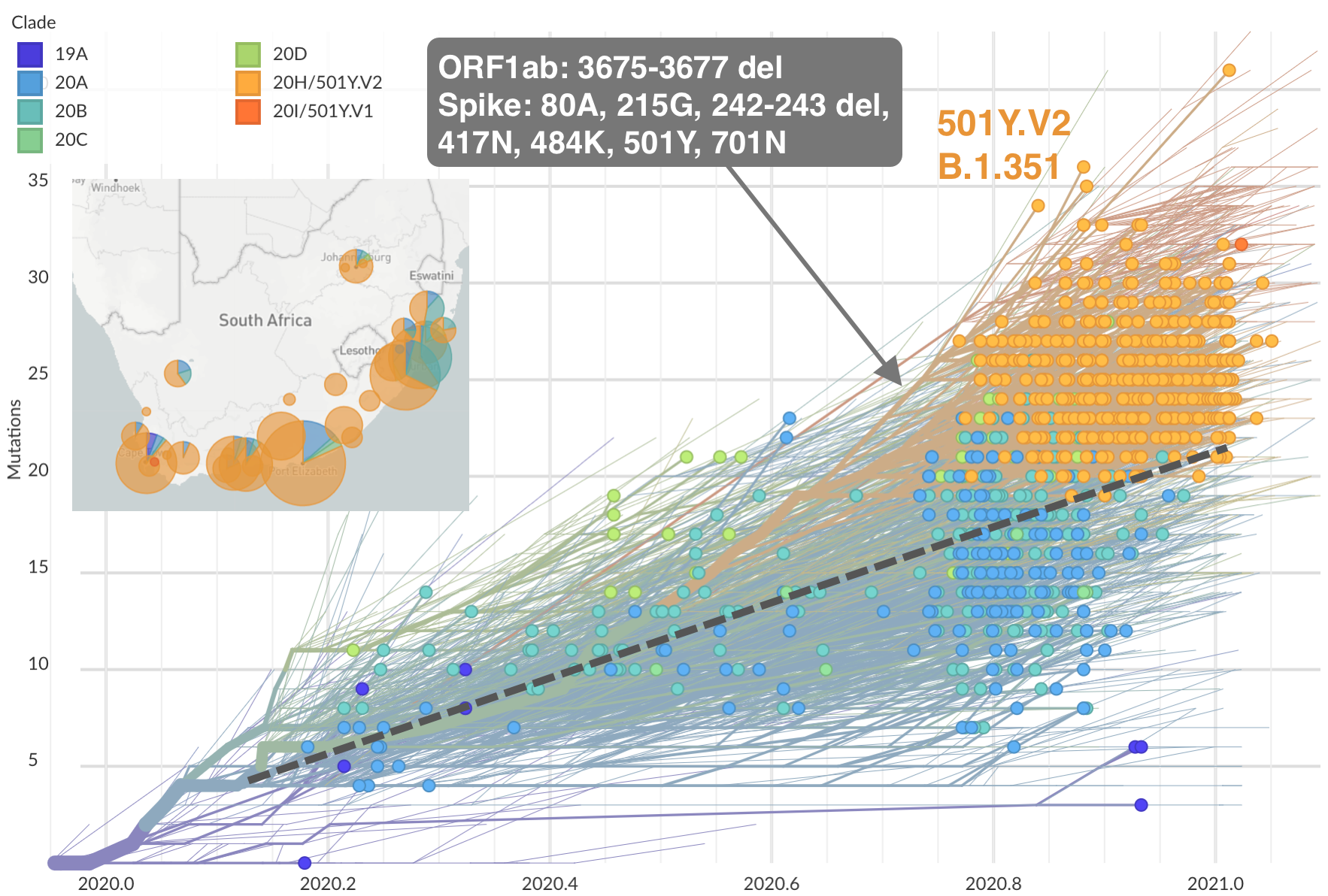
Trevor Bedford
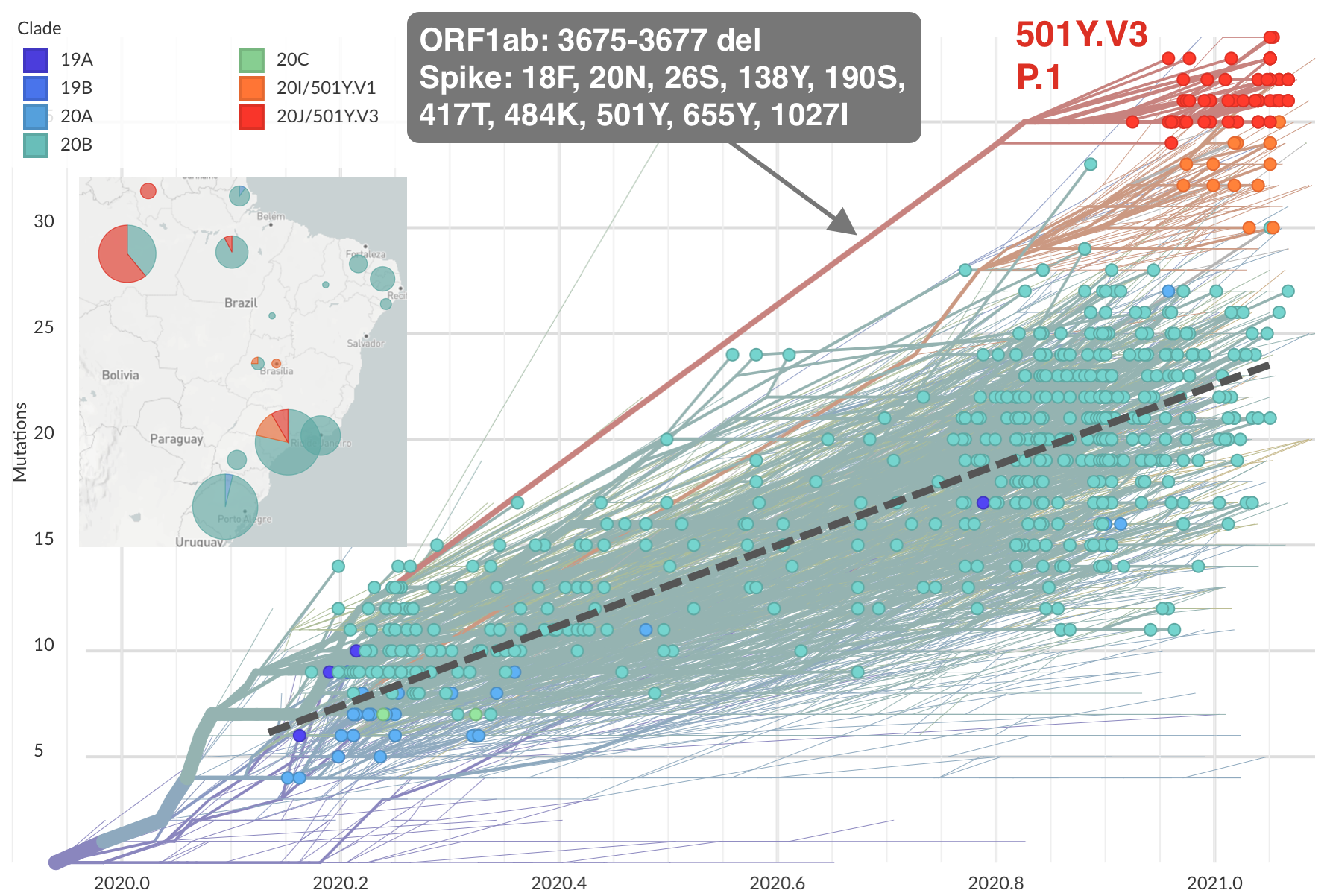
Trevor Bedford



- What are the evolutionary processes that shape a tree?
- What are the non-evolutionary processes that shape a tree?
Reconstructing state on a tree



This case, WA2, is on a branch in the evolutionary tree that descends directly from WA1, the first reported case in the USA sampled Jan 19, also from Snohomish County, viewable here: https://t.co/gxyo0PsJ7x 2/9 pic.twitter.com/LBH26A0AFC
— Trevor Bedford (@trvrb) March 1, 2020
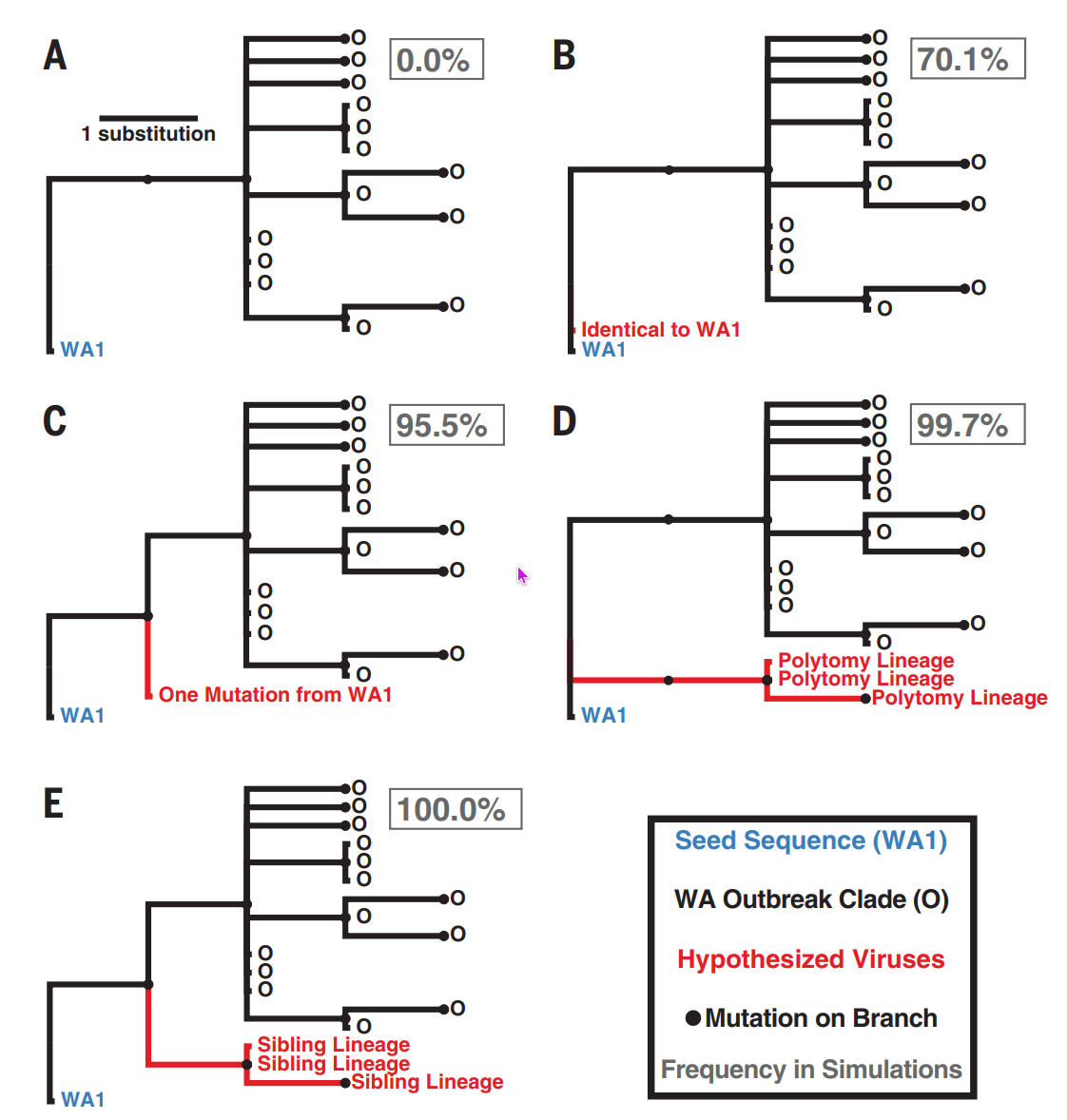

WA epidemic ended up being a second introduction from BC…